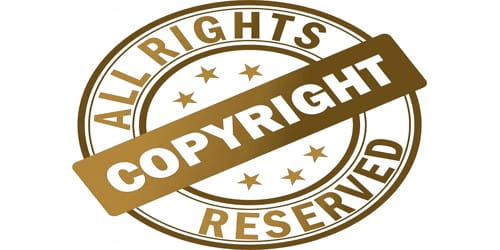All Rights Reserved
The phrase “All Rights Reserved” is often used by owners to indicate that they reserve all of the rights granted to them under copyright law. This is printed intimation in literary work. Common meaning – it refers to the exclusive legal rights an author, musician, artist or other creator has in regards to his/her original work. With these few words printed in books, the publishers or the writers as the case may be, notify that they reserve all sorts of legal rights as regards alteration, addition, translation, reproduction, etc. of a literary work. Using the words “all rights reserved” can be part of your copyright protection strategy.
For example – [© 20xx (name). All rights reserved.] This line of text notifies others that the work is protected by copyright; it identifies the owner/creator of the work and lists the year of first publication. Another example, photographers who post their own pictures online through photo-hosting websites such as Flickr, will often post an “All Rights Reserved” notice in the photograph’s title description. It indicates that the copyright holder reserves, all the rights provided by copyright law, such as distribution, performance, and creation of derivative works. This is only relevant for members of the Buenos Aires Copyright Convention. This protection ensures that creators of original works can profit from their creations, by protecting them against infringement by others who use the work without permission.
Along with when there is no space on a Bill of Exchange for making further endorsements, a slip of paper is attached to the bill for the purpose. The bills can be transferred from one to another; the payee can endorse it to another person on the back of the bill under his signature. This slip is known as an “Along.” This is a part and parcel of the original bill.
















